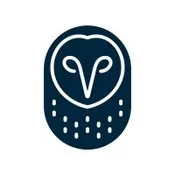Perspectives
Remember the lorry driver shortage of 2021 and the threat of empty shelves?
October 18, 2022
Senior Vice President, EMEA

Get the latest from Samsara
Subscribe nowIt’s funny how quickly we forget. This time last year the world faced a nightmare of empty supermarket shelves and the prospect of economic gridlock in the wake of driver shortages.
The pandemic-related shortage — made worse by the fuel crisis — simply enflamed newspaper headlines that talked of a ‘supply crisis’ that, if left unresolved, could even lead to Christmas being cancelled.
In the UK, in a bid to head off a supply chain disaster, the government intervened by holding emergency meetings with industry groups to try and find a resolution. One of the things that emerged was a recognition that HGV drivers needed better working conditions.
Driver shortages are yesterday's news, but the problems still exist
Fast forward to today and the driver shortages — which also affected mainland Europe and North America — are no longer front-page news.
But although there are signs that driver numbers are returning to pre-pandemic levels, there are still concerns that this pivotal link in the supply chain is still undervalued.
Only last month the UK government published details of research into truck stops and driver facilities for when they need to park up overnight. Despite reassurances to improve roadside facilities for drivers, it appears there is still much work to be done.
The lesson from last year is simple. If economies are to prevent the kind of driver-related supply chain shocks that happened last year, then we need to take better care of drivers. Providing better roadside facilities is one approach. Improved remuneration packages is another.
Using tech to improve conditions for drivers
Here at Samsara, we’re doing our bit by providing driver-centric technologies to make their jobs easier and safer. Not only does this help with the retention of staff, it also helps recruit new drivers.
Our recent State of Connected Operations report found that employees expect modern tools that improve safety, automate daily tasks, and are as easy to use as the technology they rely on in their personal lives.
To put it another way, why should a driver with a smartphone in their pocket that they use for online shopping or banking be expected to use an outdated pen and paper for key every tasks? What type of experience does this give the driver and the customer?
For me and others, though, the key area for driver recruitment and retention pivots around safety.
Earlier this month, for example, Samsara unveiled its new Proactive Driver Coaching solution, which takes driver safety to a whole new level. AI-assisted cameras can spot if someone isn’t wearing a seatbelt - or is using a mobile phone while driving — and warn them to take remedial action.
The new coaching solution can also be used to identify bad driving habits. Crucially, the technology empowers drivers to correct their own behaviour while on the road. Only if in-cab safety advice is ignored are managers alerted as part of a more formal safety training exercise.
If you’re in any doubt about the difference dashcams and connected technology make to drivers, then the opening words from this video say it all.
Drivers are a pivotal link in any supply chain
It talks about how Samsara and MGroup Services Plant & Fleet Solutions Ltd partnered together to put safety at the centre of everything it does. But it’s the words of Mark Dixon, Safety, Health, Environment and Quality (SHEQ) Manager, M Group Services Plant & Fleet Solutions, that resonate for me.
“It's only when you drive one of these, you know how vulnerable drivers can be,” says Mark. “They're on the road driving for extended periods under pressure to be where they need to be, and the customer is relying on them to get the job done. They need support.”
Last year’s driver shortage may have been forgotten by many. For me, it’s a lasting reminder of the importance of skilled drivers to keep our economy and our society functioning. It’s one of the things that motivates me each day when I speak to customers.
At Samsara, we’re not in the business of providing truck stops for drivers. We have no influence over driver remuneration. But we do have a role in providing technology that makes the working life of drivers easier and safer.
And we will continue to innovate and introduce new solutions to meet the needs of drivers. With Christmas around the corner, it’s the least we can do.
Get the latest from Samsara
Subscribe now














